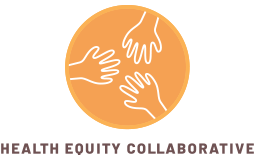25 Aug August is Immunization Awareness Month: Let’s Spread the Word
August 25, 2020
This August, we’re celebrating National Immunization Awareness Month. The annual observance encourages people of all ages to stay up-to-date on routine vaccinations against preventable diseases.
Amid the coronavirus pandemic, it’s now more important than ever that Americans — particularly vulnerable minority communities — heed this call to protect their health.
Unfortunately, recent data suggests we’re trending in the opposite direction. Per the most recent available data in May, the number of administered doses of non-influenza vaccines had dropped by nearly a third compared to the same time last year, according to VaxCare.
Childhood vaccination rates have seen an even more precipitous drop in recent months. As of May, less than half of 5-month-old Michigan children had received doctor-recommended vaccines. In recent years, that number typically hovered around 67 percent, according to the Centers for Disease Control and Prevention (CDC). Meanwhile in New York, roughly 35 percent fewer vaccines were administered to patients between the age of two and 18 as of June 2020 compared to June 2019.
And according to recent reports, as many as one-third of U.S. residents will refuse to receive a vaccine for COVID-19 once it becomes available.
Although the severity of this problem has only recently reached public consciousness, it isn’t news to many. For years — whether for pneumonia, influenza, HPV, hepatitis, measles, or polio — minority Americans have reported difficulty reaching satisfactory vaccination rates.
For instance, in 2015, only 22.5 percent of Hispanic adults had received a full course of the hepatitis B vaccination, compared to 35 percent of White adults. That same year, only 36 percent of non-Hispanic Black adults received a flu vaccine, compared to nearly 50 percent of non-Hispanic White adults.
The reality of COVID makes these low vaccination rates all the more concerning. Minority communities have been disproportionately affected by the pandemic. And those who suffer from preexisting conditions or illnesses are far more likely to face serious health complications — even death — from the virus.
Already, public health experts fear what they call a “twindemic” — the intersection of the flu season and a continued coronavirus surge. They say the best way to protect against such a scenario is to get a flu shot and, while at the doctor, make sure all other vaccinations are in order.
For those who aren’t sure what vaccinations they may need, the CDCs Adult Vaccine Assessment tool is incredibly useful. Patients only have to answer a brief questionnaire and they can access resources on how to get appropriate vaccines.
A working COVID-19 vaccine could become available as soon as this fall. It’s important that Americans take steps now to understand the health benefits such innovation yields so that they’re prepared to take full advantage once it hits the market.
The stakes are too high, and the solution too simple, to allow more people to succumb to a needless death. There’s no time like the present for Americans — especially minority communities — to stay on top of their vaccinations.


